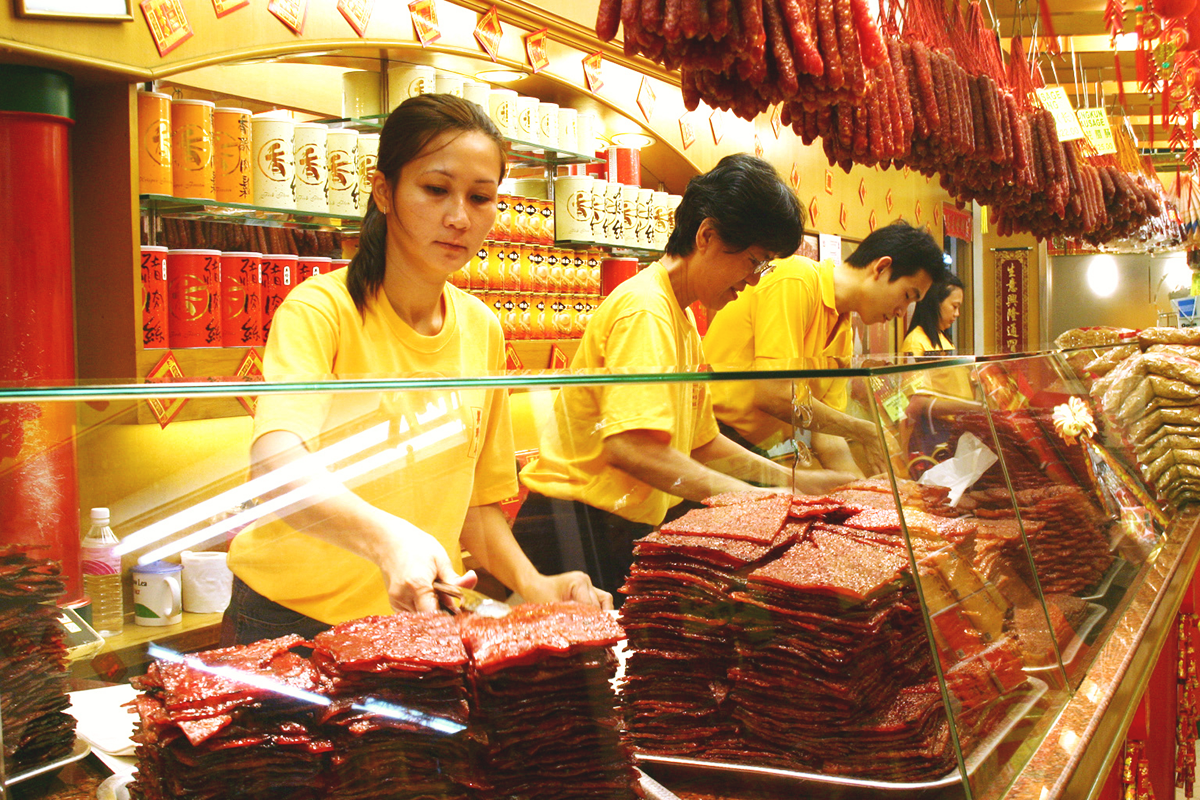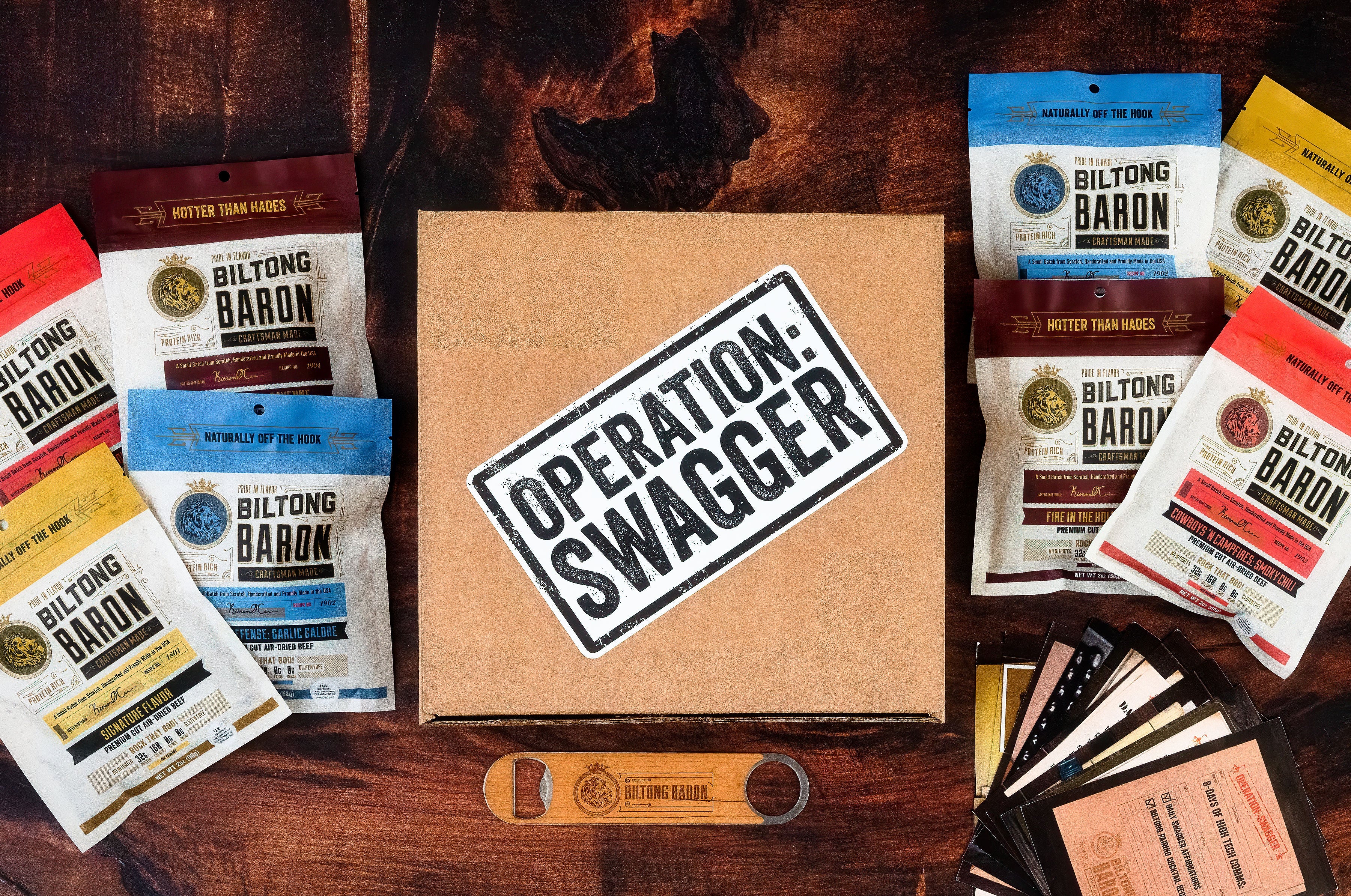-
Recently Viewed
You have no recently viewed items.
-
Featured Brands
- All Products
- About Us
- Contact Us
- Our Blog

Bak Kwa: The Chinese Jerky You Have To Try
When talking exotic jerky, you’d be remiss to leave out bak kwa.
Intrigued? Bak kwa is a delicious Chinese pork jerky snack that’s especially popular around Lunar New Year. Some say bak kwa symbolizes good fortune, abundance and prosperity, making it a fantastic treat to ring in the new year.
Similar to traditional jerky, this Chinese-style beef jerky is a succulent, thinly sliced, barbecued meat. This jerky variant has origins in South China.
Let’s learn more about what counts as bak kwa jerky, its history, its variations and its nutritional value. You’ll be an expert on this festive morsel in no time!
[Related: Traveling With Beef Jerky: What You Need To Know]
What Is Bak Kwa?
So, what is bak kwa, exactly?
Like we mentioned, bak kwa is a sweet and salty snack similar to jerky. “Bak kwa” means “dried meat” in the Hokkien dialect, and it’s especially in demand as a celebratory snack around the Lunar New Year season.
To make the dish, people slice barbecued meats — typically pork — into thin strips and season them with sugar and spiced marinade. Then, they air-dry and cook the strips over a hot plate or open flame.
History and Origins of Bak Kwa
Historians believe bak kwa first came from the Fujian province in ancient China. In the 15th century, Hokkien immigrants traveled from Fujian to the Malay Archipelago (modern Malaysia) to escape a rough life of poverty. They brought bak kwa jerky with them because they could preserve it easily, regardless of the climate and their available tools.
Over time, bak kwa became a delicacy. Locals even considered it a luxury — hence its popularity during Chinese New Year.
As poverty decreased for most citizens, bak kwa became more affordable. Of course, that led to more widespread consumption — and its ongoing popularity.
Best Type of Meat for Chinese Jerky
Although bak kwa is historically known as Chinese pork jerky, you have another option: Chinese beef jerky.
Chinese dried beef jerky is a great way to prepare bak kwa for folks who don’t eat pork. Nowadays, you can even find more exotic variants, including crocodile, emu, prawn, ostrich, turkey and lobster bak kwa.
Some versions of bak kwa also include ingredients like pineapple, ginseng, garlic or cheese that enhance its flavor. Yet other kinds use different pork meats, like the belly instead of the hind leg.
[Related: What Is the Best Meat To Make Beef Jerky?]
Bak Kwa Calories and Nutrition Info
Frankly, bak kwa isn’t the healthiest snack to grab if you’re watching what you eat. Fortunately, you can easily find healthier types of bak kwa.
How so? Bak kwa aficionados create “light” products with softer textures, lighter colors and less sugar than standard bak kwa.
You can also find bak kwa made from turkey or less fatty pork loin, as well as organic bak kwa without preservatives, MSG or artificial food coloring.
According to MyNetDiary, bak kwa has the following nutrition information:
Nutrition Facts (one slice)
- Calories — 229
- Total fat — 6 grams (8%)
- Saturated fat — 3.1 grams (16%)
- Cholesterol — 19 milligrams (6%)
- Sodium — 230 milligrams (10%)
- Total carbs — 18 grams (7%)
- Dietary fiber — 0 grams
- Total sugars — 0 grams
- Protein — 12 grams (24%)
[Related: Is Beef Jerky Healthy?]
Beef Jerky vs. Bak Kwa
While similar to traditional beef jerky, the centuries-old bak kwa has a couple key differences.
First off, people traditionally make bak kwa from sliced and marinated pork instead of beef. (That’s certainly a major difference.)
Plus, Chinese bak kwa is moist and grilled to perfection. That’s in pretty stark contrast to the extreme chewy dehydration you find with most beef jerkies — especially in the Western world.
How To Eat Bak Kwa
With its perfect combination of salty goodness and delectable sweetness, bak kwa isn’t simply a wonderful on-the-go snack. It’s also a fantastic protein addition to several easy-to-make dishes.
The next time you’re looking to spice up a meal, consider adding bak kwa to these dishes:
- Nachos
- Salads
- Deviled eggs
- Pizza
- Rice porridge (known as “congee” in China)
- Fried rice
- Pasta
- Scrambled eggs or omelets
Explore the Jerky Universe
If this article made your stomach rumble or your mouth water, just wait until you read about other exotic jerky from all around the world.
Prepare to expand your palate! Check out our guides to an array of exotic jerkies, including these tasty types:
Luckily for you, the Jerky Universe is your number-one resource for all things jerky. From discovering the hottest beef jerky in the world to learning how to use beef jerky in recipes, the Jerky Universe has you covered.
Don’t forget to follow us on social media and subscribe to our newsletter below. You’ll find fun facts, yummy tips, delicious products and more!
Featured image “Bakkwa” by Chaerani licensed under CC BY-SA 3.0
- Choosing a selection results in a full page refresh.









